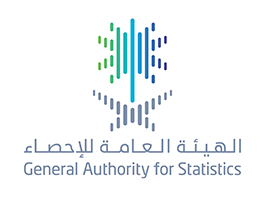
الهيئة العامة للإحصاء تنظم ورشة عمل حول تعداد السعودية 2022م
The General Authority for Statistics organized a virtual webinar on the Saudi Census 2022, with the participation of a number of GASTAT employees and international experts, to introduce the census methodology and the efforts made in its implementation, after announcing the results of the first phase of the Saudi Census 2022, which included demographics, households and housing.
In the course of the webinar, the participating international experts confirmed that the Saudi census 2022 is one of the most powerful population censuses that have been implemented recently in the Arab region and the Middle East due to the combination between register-based data and field enumeration. They pointed out that the high level of integration and participation between government entities, and the development of digital infrastructure in Saudi Arabia contributed to achieving data quality, making it a pioneering experience in the framework of combining and comparing multiple sources.
The webinar addressed several axes, most notably the statistical methodology that was used in the Saudi census 2022, which international experts described as a professional methodology. It went through several stages, beginning with the preparation of the census project, then collecting, analyzing, and processing statistical data, and finally extracting and publishing the results in line with international best practices.
The webinar discussed the technical aspect of the Saudi census 2022, and the impact of the great development in the digital infrastructure witnessed by Saudi Arabia with the launch of Vision 2030. This helped in raising GASTAT’s technical capabilities, as the latest modern technologies were used in the census project, such as self-enumeration. Field enumeration process relied on geospatial data, using satellite images with the aim of improving geographical coverage, accuracy of sorting addresses, and ensuring that no dwelling was overlooked during enumeration. Satellites have also contributed to verifying dwellings data with high accuracy.
The webinar included a discussion of the main quality standards that were applied in the data collection phase to ensure coverage of the entire population, and comparisons between what was applied in the Saudi census 2022 and the procedures used in a number of countries of the world, including the United States of America, the United Kingdom, and Australia, in addition to talking about the pivotal role GASTAT undertakes to maintain the highest levels of confidentiality and privacy for individuals and to protect their personal data that they provided during the data collection phase.
The webinar revealed that GASTAT has allocated an integrated team to review and audit the data, and made more than a million calls to ensure the quality of work, in addition to carrying out (900,000) additional field visits to ensure the accuracy and quality of the data collected. It also compared five different sources of data and reviewed them through 200 indicators of data quality. This had a great impact in providing an accurate population database that will be used as a reliable basis for developing economic and social policies.
The webinar emphasized that this reflects the importance of the census project in providing accurate and reliable data and various statistical indicators on the demographics of Saudi Arabia that support decision-makers and contribute to the development of plans and policy-making in all sectors and fields.
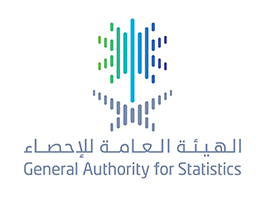
الهيئة العامة للإحصاء تعلن إجمالي أعداد المعتمرين والحجاج لعام1443هـ/ 2022م
General Authority for Statistics announced that the total number of pilgrims during 2022 reached (24,715,307), including 9,517,829 pilgrims who performed Umrah for one time. Total number of external Umrah performers reached (8,372,429), where males reached 3,700,785, by 44.20%, and female reached (4,671,644), representing 55.80%. However, total number of internal Umrah performers reached (16,342,878), where the number of Saudis among them recorded (6,642,881), representing 40.65%, and the number of non-Saudi pilgrims reached (9,699,997), representing 59.35%.
Total number of internal male pilgrims made up(11,033,994) with a percentage of 67.52%, while the number of female pilgrims reached (5,308,884) with a percentage of 32.48%. April was the most intense month during the year in terms of the number of pilgrims, recording (5,479,637). However, Makkah region was the largest in terms of the total number of internal pilgrims, recording (10,270,637).
Regarding Hajj statistics during the past year (1443 / 2022), the total number of pilgrims reached (926, 062), where external pilgrims, who came through various ports, recorded (781,409) with a percentage of 84.4%, while the number of internal pilgrims reached (144,653) representing 15 ,6%.
GASTAT’s statistics indicated- in its statistical results for Hajj season during the past year 1443- that the number of internal male pilgrims reached (77,776) pilgrims, while the number of females reached (66,877) pilgrims. However, the number of external male pilgrims and female pilgrims reached (421,999) and (359,410), respectively.
According to GASTAT, the percentage of pilgrims coming to KSA via air transportation amounted to 94.7%, and land transportation accounted for 4.5%, out of total pilgrims . However, sea transportation was least used by external pilgrims by 0.8%.
GASTAT indicated that the total number of workforce participated to service pilgrims and Umrah performers during the past year 1443 from various government and private sectors exceeded 236 thousand male and female employees, including 73,556 from public services sector, 26,392 from medical services sector, 19,421 from transportation services sector and 3,728 from telecommunications sector.
With regard to medical services provided to pilgrims during Hajj season last year 1443, the number of medical facilities and teams within the scope of Makkah, Madinah, and Holy Sites reached 900 that provided emergency and inpatient services to more than 22,000 pilgrims. Moreover, cardiac catheterization services, kidney dialysis and other surgical operations were conducted to 1,904 pilgrims, and vaccination campaigns were implemented to pilgrims, workers and residents of Makkah region with 120,423 thousand doses.
It should be noted that GASTAT relied on administrative records data that are used as main source of data while issuing statistical data and indicators of Hajj and Umrah for 1443 /2022 and represented in all government and private entities, including data for Hajj permits for internal pilgrims and for those hold Hajj visa to count the number of pilgrims. Data was also provided according to a unified form that includes a number of elements such as data of workforce and medical services of entities participated to service pilgrims and Umrah performers, according to temporal and spatial reference.
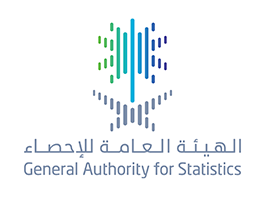
ارتفاع الرقم القياسي للإنتاج الصناعي بنسبة 3.2% في شهر أبريل لعام 2023م
General Authority for Statistics (GASTAT) issued, on its official website the results of the Industrial Production Index (IPI) for April 2023. (IPI) increased by 3.2% in April 2023. This increase resulted from the increase in mining, quarrying, manufacturing, in addition to electricity and gas supply activity.
The mining and quarrying activity index increased by 0.2 % in April 2023, compared to the same month of the previous year (April 2022). Manufacturing activity also increased by 10.5% in April 2023, compared to April 2022. However, electricity and gas supply went up by 25.5%, compared to April 2022.
It is noteworthy that GASTAT issues a number of Industry-related statistical products, including the industrial production index (IPI), which is an economic indicator that reflects relative changes and evolution in the volume of industrial production quantities based on the data of the industrial production survey. It is implemented monthly and targets industrial establishments operating in the targeted activities, which are mining and quarrying, manufacturing, and electricity and gas supply.
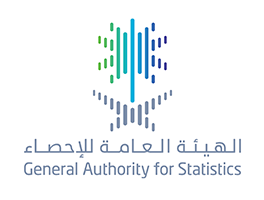
الهيئة العامة للإحصاء: الاقتصاد السعودي يستمر في النمو محققاً ارتفاعاً بمعدل 3.8% في الربع الأول من عام 2023م
General Authority for Statistics (GASTAT) issued the report of Gross Domestic Product and National Accounts Indicators for the first quarter of 2023. According to estimates, the real GDP increased by 3.8% in Q1/2023 compared to the same period of last year 2022.
During the first quarter of 2023, non-oil activities achieved a growth of 5.4% compared to the same period of last year 2022, according to the report’s results. Government activities increased by 4.9%, and oil activities also increased by 1.4% compared to the same period of last year.
The seasonally adjusted real GDP decreased by 1.4% in the first quarter of 2023 compared to the fourth quarter of 2022, the publication indicated.
It is worth noting that GASTAT is the only official statistical reference for statistical data and information in Saudi Arabia. It carries out all the statistical work, in addition to the technical oversight of the statistical sector. It also designs and implements field surveys, conducts statistical studies and research, analyzes data and information, in addition to documenting and archiving all statistical information and data that cover all aspects of life in Saudi Arabia from its multiple sources. Data are written, classified, and analyzed; their indicators are extracted as well.
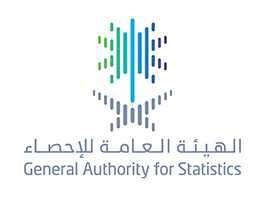
الهيئة العامة للإحصاء: تنشر تقرير التجارة الدولية للربع الأول من عام 2023
General Authority for Statistics issued Saudi Arabia's International Trade Publication for Q1 of 2023. According to the publication, the value of merchandise exports of Saudi Arabia during Q1 of 2023 amounted to SAR 313.5 billion, compared to SAR 367.1 billion during Q1 of 2022, with a decrease of SAR 53.6 billion, by 14.6%.
The publication indicated that the value of oil exports in March 2023 recorded 245,4 billion SAR compared to 288,5 billion SAR in March 2022 during Q1, with a decrease of 43,1 billion SAR by 14.9%. On the other hand, the decline of non-oil exports was the main driver of merchandise exports decline.
According to the publication's results, the value of non-oil exports (including re-export) during March 2023 amounted to SAR 68,1 billion SAR, compared to SAR 78,6 billion SAR during March 2022, with a decrease of SAR 10,5 billion SAR, by 13.3%.
While the value of imports during Q1 of 2023 amounted to 186.4 billion SAR, compared to 157.9 billion SAR during Q1 of 2022 , with an increase of (28.5 billion) twenty-eight billion five hundred million SAR, by (18.0%).
It is worth noting that GASTAT is the only official statistical reference for statistical data and information in Saudi Arabia. It carries out all the statistical work, in addition to the technical oversight of the statistical sector. It also designs and implements field surveys, conducts statistical studies and researches, analyzes data and information, in addition to documenting and archiving all works of information and statistical data that cover all aspects of life in Saudi Arabia from its multiple sources. Data are written, classified, and analyzed; their indicators are extracted as well.
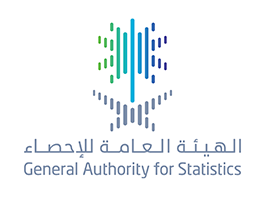
ارتفاع الرقم القياسي للإنتاج الصناعي بنسبة 4.1% في شهر مارس لعام 2023
General Authority for Statistics (GASTAT) issued, on its official website www.stats.gov.sa, the results of the Industrial Production Index (IPI) for March 2023. (IPI) increased by 4.1% in March 2023, compared to March 2022, according to the publication. This increase mainly originated from the increase in mining, quarrying, manufacturing, and electricity and gas supply activity.
Mining and quarrying activity index increased by 1.6% in March 2023, compared to the same month in the previous year (March 2022). Manufacturing activity also increased by 10.5% in March 2023, compared to March 2022. Electricity and gas supply went up by 16.6% compared to March 2022, according to the monthly publication.
It is noteworthy that GASTAT issues a number of Industry-related statistical products, including the industrial production index (IPI), which is an economic indicator that reflects relative changes and evolution in the volume of industrial production quantities based on the data of the industrial production survey. It is implemented monthly and targets industrial establishments operating in the targeted activities, which are mining and quarrying, manufacturing, and electricity and gas supply.
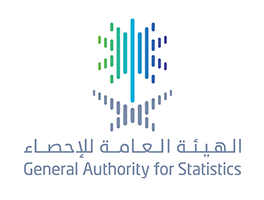
الهيئة العامة للإحصاء: الاقتصاد السعودي يتجاوز تقديرات المنظمات الدولية ويحقق أعلى نمو بين دول G20 بنسبة 8.7% خلال عام 2022م
General Authority for Statistics issued Saudi Arabia's International Trade Publication for Q1 of 2023. According to the publication, the value of merchandise exports of Saudi Arabia during Q1 of 2023 amounted to SAR 313.5 billion, compared to SAR 367.1 billion during Q1 of 2022, with a decrease of SAR 53.6 billion, by 14.6%.
The publication indicated that the value of oil exports in March 2023 recorded 245,4 billion SAR compared to 288,5 billion SAR in March 2022 during Q1, with a decrease of 43,1 billion SAR by 14.9%. On the other hand, the decline of non-oil exports was the main driver of merchandise exports decline.
According to the publication's results, the value of non-oil exports (including re-export) during March 2023 amounted to SAR 68,1 billion SAR, compared to SAR 78,6 billion SAR during March 2022, with a decrease of SAR 10,5 billion SAR, by 13.3%.
While the value of imports during Q1 of 2023 amounted to 186.4 billion SAR, compared to 157.9 billion SAR during Q1 of 2022 , with an increase of (28.5 billion) twenty-eight billion five hundred million SAR, by (18.0%).
It is worth noting that GASTAT is the only official statistical reference for statistical data and information in Saudi Arabia. It carries out all the statistical work, in addition to the technical oversight of the statistical sector. It also designs and implements field surveys, conducts statistical studies and researches, analyzes data and information, in addition to documenting and archiving all works of information and statistical data that cover all aspects of life in Saudi Arabia from its multiple sources. Data are written, classified, and analyzed; their indicators are extracted as well.
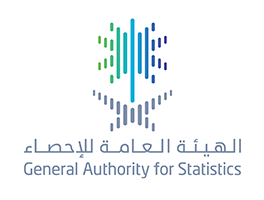
ارتفاع الرقم القياسي للإنتاج الصناعي بنسبة 6.8% في يناير لعام 2023م
General Authority for Statistics (GASTAT) issued, on its official website www.stats.gov.sa, today, March 9, 2023, the results of the Industrial Production Index (IPI) for January 2023.
Industrial Production Index (IPI) increased by 6.8% in January 2023, compared to January 2022, according to the publication. This increase mainly originated from the increase in mining, quarrying, and manufacturing activity.
Mining and quarrying activity index increased by 3% in January 2023, compared to the same month in the previous year (January 2022). Manufacturing activity also increased by 19.2% in January 2023, compared to January 2022. Electricity and gas supply decreased by 3.4% compared to January 2022, according to the monthly publication.
It is noteworthy that GASTAT issues a number of Industry-related statistical products, including the industrial production index (IPI), which is an economic indicator that reflects relative changes and evolution in the volume of industrial production quantities based on the data of the industrial production survey. It is implemented monthly and targets industrial establishments operating in the targeted activities, which are mining and quarrying, manufacturing, and electricity and gas supply.
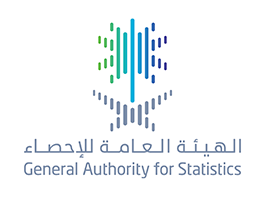
ارتفاع الرقم القياسي للإنتاج الصناعي بنسبة7.3 % في شهر ديسمبر 2022م
General Authority for Statistics (GASTAT) issued, on its official website www.stats.gov.sa, today, February 9, 2023, the results of the industrial production index (IPI) for December 2022.
The publication results showed that during December 2022, IPI increased by 7.3% compared to the same month in the previous year (December 2021), as a result of the increase in mining, quarrying, and manufacturing activity.
The results of the index's monthly publication revealed that the mining and quarrying activity index for December 2022 increased by 4.1% compared to the same month in the previous year (December 2021). Manufacturing activity also increased by 18.5% in December 2022 compared to the same month in the previous year (December 2021), while electricity and gas supply activity decreased by 6.5% compared to December 2021.
According to the report's results, the industrial production index recorded positive growth rates during the year 2022, due to the increase in mining and quarrying activity as well as manufacturing activity.
It is noteworthy that GASTAT issues a number of Industry-related statistical products, including the industrial production index (IPI), which is an economic indicator that reflects relative changes and evolution in the volume of industrial production quantities based on the data of the industrial production survey. It is implemented monthly and targets industrial establishments operating in the targeted activities, which are mining and quarrying, manufacturing, and electricity and gas supply.
